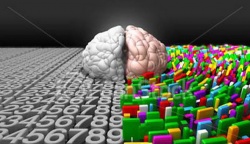The Five Kleshas
The five kleshas are five mental patterns or defects which must be understood before real Nath practice can begin. These five non-productive patterns are the cause of all the miseries and afflictions of life. It is one of the goals of Nath practice to learn to identify, control, and ultimately uproot or unwind these patterns.
In The Magnum Opus of Twilight Yoga, Shri Gurudev Mahendranath listed the five kleshas:
The five pain-bearing obstructions,
The root cause of trouble and strife,
Ignorance, Ego, Repulsion,
Attachment & Clinging to life.
The Kleshas, like any concept, look different from different perspectives. In order to assemble some type of common view, it is often a good idea to put the concept into its stated context and examine and look for the functional basis of the idea; i.e. what it means, what it does, what is its relative value to us personally.
The Kleshas are meant to indicate aspects, things, or entities which obstruct us from living in the fullness of our “Spirit” potential. There are alternative lists of the “five things” in various traditions and sometimes the list is even enlarged to include eight or more “things.”
The main idea of the Kleshas, is a listing of important “pillars,” [...] which are fundamental to the basic creation of a sense of “self identity.” At the same time, an integrated structure of “self identity” remains important in daily life. At this moment I have the sense that “I” am writing this email. “I” am attempting to communicate an idea to others, etc.
The kleshas can be dissolved in various states of divine consciousness. The puzzle remains that one is unlikely to enter the sphere of divine consciousness without letting the Kleshas slip quietly away during the period of our Yoga. Exertions, Observations or Restrictions which allow this process to unfold are the signatures of our Path.
We eventually descend again back into the kleshas by degree if we are still in the body. Yoga is relative to the body/mind and time based as long as there are relative aspects to the individual body/mind.
Nonetheless, the “process” and metaphor of ascent into Divine Consciousness and descent back into a kleshic sense of self identity remains a Helix like process of spiritual evolution, because the process transforms us. Rightly engaged, the process expands and permeates the life as a whole.
The Five Kleshas
Ignorance
Non-science, untrue, bogus, illusion, delusion, lack of awareness of reality or the real, unenlightened, backward. It is also the ground in which the four other Kleshas fertilize. Thus Ignorance is when we think the unreal is actually real; that matter is the ultimate or only important real substance; mistaking religion, dogmas, or superstitions for spirituality; when we think in terms of “I,” “I am the body,” “This is me.” Ignorance is absence of knowledge of the spirit of man.
Ego
The “I” or “Me-maker,” the opinion we have of ourselves, but one which is seldom shared by others. An imagined personality. Mistaken identification of nature, mind, and spirit as the body. To identify oneself with worldly life, the body, and the senses. Arrogant conceit is often a cover to hide one’s inferiority; Real men and women have no need to advertise themselves. Ego is a mask we wear to try to hide and veil what we are.
Repulsion
Aversion or repulsion to people, things, or ideas. Its counterpoise is obviously a state of Equipoise Neutrality. The true nature of the Spirit (Atman) is non-discriminating. Aghora (the Lord Shiva) means nothing horrible in itself.
Attachment
Possessiveness, ownership, liking, attraction. Attachment to people, things, and ideas. To join, connect, or associate ourselves with something. “This is ours,” “This is mine.” Attachment in its negative sense to things we cannot own or keep. Often the cause of quarrels, violent conflicts, and even war. Expressed also as race, nationality, my country, my money. Attachment can only have free play on lower mind levels.
Repulsion and attraction are two sides of a single coin. Their obstacle value can be impediments and overcome by: Contentment, Neutrality, Tranquility, and Knowledge.
Clinging to life
Fear of Death. Desire for body continuity. Though most of human life is pain, misery, sickness and woe, delusion gives most people an abnormal desire to live. The other four Kleshas help to strengthen the delusion. Every living body has a limited lifespan to live on earth, and humans are no exception to what are but natural laws.
The Five Kleshas can also be effectively viewed as individual “rays” which emanate from a common mechanism or source. This mechanism is hard wired into all human beings and is much connected to our inbuilt mechanism of perception and the five senses. This inbuilt aspect of our humanity interprets sensory information, relative to our individual “I” and give rise to our personal limited identity and experiences. Our sense of Ego, the (Me, Myself and I) maker is the basis of this inbuilt mechanism and all of the other kleshas are relative to, and emanate from, this principle source.
The idea of the Kleshas relative to spiritual development is greater than the consideration of kleshas as individual things or problems. An example of this would be the perception. “I’m having trouble with aversion.” It is implicit in this consideration that there is a fixed identity, “Ego” perceiving that it has a problem or is working with “aversion.” Since the root kleshic condition is only being considered or worked with as a reflected and partial aspect, we should expect only limited results.
The Five Kleshas as a “spiritual problem” can only be addressed by the movement or transit of our limited Ego identity back into the Divine Consciousness of the Spirit. This is the Path of Return. The method is Yoga (Union, Yoke or Reunion). Success in Yoga requires an individual to offer, during the period in which they exert to Return, all that they Are. This approach begins to cut to the root of the limited self identity in a radical and transformative Way.
At some point, there is no “I” left to exert. One is then solute and suspended in the Supreme Substance. This juncture signals the beginning of Attainment or Success in Yoga.



